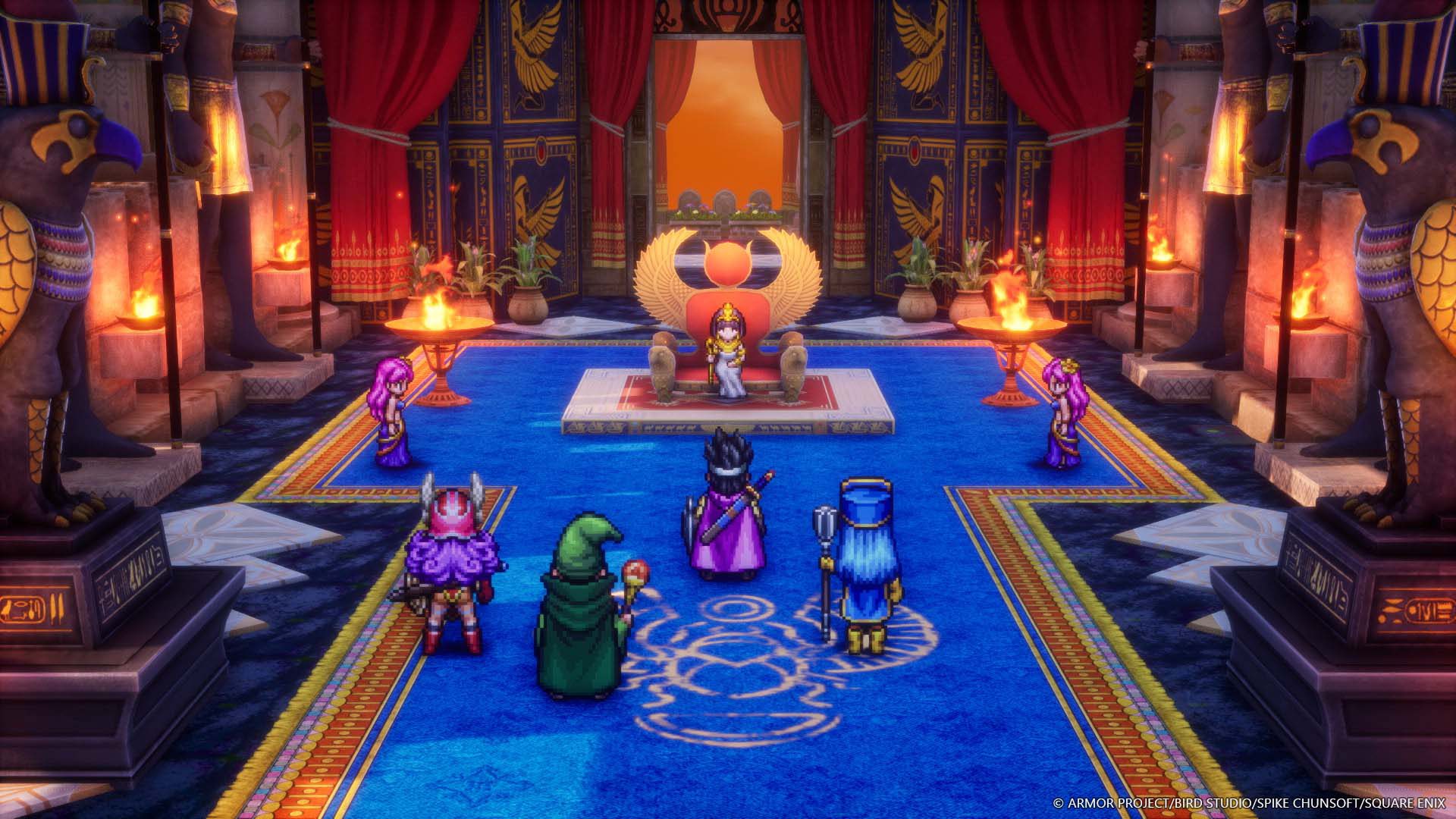The much-anticipated release of the Dragon Quest III HD-2D Remake is on the horizon, set to launch on November 14. In preparation for this exciting event, we had the distinct pleasure of interviewing Masaaki Hayasaka, the producer of this visually stunning remake. This new version of Dragon Quest III revitalizes the original classic by employing the HD-2D art style, a method that combines nostalgic pixelated characters with modern 3D backdrops. This style has gained popularity through its use in games like Octopath Traveler, and it plays an essential role in bringing the retro charm of Dragon Quest III into the modern era.
Unleashing the Potential of HD-2D Graphics
HD-2D Visual Style: At its core, the HD-2D style merges traditional pixel art with modern 3D environments. This combination is particularly effective for retro games. When Dragon Quest III was originally released, players would explore the game’s world with imaginative depictions of its landscapes. Now, with HD-2D, these imagined landscapes are vividly realized, bringing the game world to life in an unprecedented manner.
Maintaining the Dragon Quest Essence: Despite the visual overhaul, the remake remains unmistakably Dragon Quest III. The key to retaining its iconic style lies in the color palette. Dragon Quest games are renowned for their vibrant and rich colors, and the remake stays true to this legacy. Although the graphics have been significantly updated, the color schemes remain faithful to the original experience, ensuring that long-time fans will find it comfortably familiar.
Collaboration with Yuji Horii
Involvement of Yuji Horii: Throughout the development of the remake, frequent communication with Yuji Horii, the creator of the Dragon Quest series, was crucial. From the planning stages to the final touches, discussions covered a wide range of topics, including new gameplay features like the Monster Arena and additional story episodes. Even aspects like the balance of battles and the scale of character pixels were meticulously examined.
Influence on Design Decisions: One notable piece of feedback from Horii involved the use of background blur, a technique known as depth of field, which is also used in photography to create a sense of focus. Initially, the development team believed they had mastered this technique due to their prior experience with HD-2D games. However, Horii observed that the blur was too pronounced, making it uncomfortable for players. Based on his insight, the team reduced the intensity, which ultimately differentiated Dragon Quest III from other HD-2D titles. His recommendations were a testament to his understanding of player experience, and they contributed to the game’s unique identity.
Diverse Applications of HD-2D
Unique Implementations Across Titles: While all HD-2D games share the characteristic of placing pixelated characters in 3D worlds, each title utilizes the style in distinct ways. For instance, Octopath Traveler includes pixel elements in its backgrounds, whereas Dragon Quest III does not. Additionally, variations in character proportions and pixel sizes further distinguish each game. Notably, Dragon Quest III is the first HD-2D game to feature a world map that players can explore—a pioneering addition to the genre.
Adjusting the World Map: The original layout of buildings remains unchanged in the remake, but the scale of the map has been carefully adjusted. The challenge lay in finding the right balance: maintaining the map’s density without it feeling cluttered, while also preventing it from becoming too expansive, which would disrupt the game’s pacing. Through extensive trial and error, the development team achieved a harmonious balance that enhances both the visual and gameplay experience. Observant fans may notice that the initial teaser trailer showcased a different map scale compared to the final version.
Introducing Character Customization
Modernizing Character Appearance: The remake introduces a new feature that allows players to customize the appearance of their party members, including options like hair color. In the original game, changing a character’s vocation could result in jarring transformations, such as a young martial artist suddenly becoming an elderly mage. The addition of character customization aligns the game with modern gaming standards, offering players greater control over their characters’ appearances.
The Drive Behind Customization: Among all the new features, character customization is particularly dear to the producer, Masaaki Hayasaka. He championed this addition despite initial resistance from the development team. His dedication to this feature was driven by a desire to offer players a personalized gaming experience. After three months of development, Hayasaka hopes that players will enjoy creating their own unique characters, enhancing their connection to the game.
Preserving Vocation Colors: Although players can alter their characters’ appearances, the primary color schemes for each vocation remain unchanged. This decision honors the original designs by Akira Toriyama and ensures that players can easily identify each vocation. The customization feature focuses on allowing players to experiment with accessories and hairstyles, adding a new layer of fun without compromising the game’s iconic visual identity.
In summary, the Dragon Quest III HD-2D Remake is a harmonious blend of nostalgia and innovation. By updating the beloved classic with modern graphics and features while preserving its original charm, the remake offers both long-time fans and newcomers an opportunity to experience the magic of Dragon Quest III in a new light. The collaboration with Yuji Horii and the dedication of the development team have resulted in a game that stays true to its roots while embracing the future of gaming. With its release just around the corner, this remake promises to be a significant milestone in the Dragon Quest series.
For more Information, Refer to this article.






























